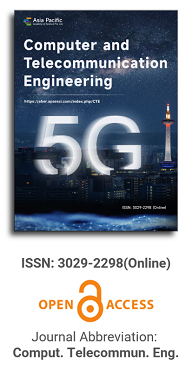
The field of computer and telecommunications engineering is rapidly advancing, with the following being some of the latest developments: 1. Virtual Reality and Augmented Reality Technologies: The ACM SIGGRAPH VRCAI 2024 [1] conference will focus on the Virtual Reality Continuum (VRC) and its applications in industry, including technologies such as Virtual Reality (VR), Augmented Virtuality (AV), Augmented Reality (AR), and Mixed Reality (MR). These technologies emphasize the coexistence and consistency between the virtual and real worlds, which are key to defining and interacting with both the virtual and physical realms. 2. Reconfigurable Intelligent Surfaces (RIS) [2]: This is a technology that optimizes wireless communication links by dynamically changing shapes, combining metamaterials, intelligent algorithms, and advanced signal processing to control and manipulate electromagnetic waves. RIS can turn ordinary walls and surfaces into intelligent components of wireless networks, enhancing communication capacity and connectivity while focusing on environmental sustainability. 3. Quantum Computing and Quantum Communication [3]: Researchers have successfully simulated Higher-Order Topological (HOT) lattices using digital quantum computers, achieving unprecedented precision. These complex lattice structures can help us understand new phenomena in quantum physics and advance the development of quantum computing and quantum communication technologies. 4. Artificial Intelligence in Scientific Research: AI is accelerating scientific research, particularly in the areas of health, communication, infrastructure, and sustainability. For example, AI algorithms can isolate brain patterns associated with specific behaviors, which can help improve brain-machine interfaces and foster new discoveries [4].
These advancements showcase the innovation and diversity in the field of computer and telecommunications engineering, indicating the direction of future technological development. We warmly welcome contributions that are aligned with these cutting-edge themes.
References: 1. VRCAI 2024. https://vrcai.cn 2. Zhang Z and Dai L. Reconfigurable Intelligent Surfaces for 6G: Nine Fundamental Issues and One Critical Problem. Tsinghua Science and Technology, 2023; 28 (5): 929-939. doi: 10.26599/TST.2023.9010001 3. Koh JM, Tai T, Lee CH. Realization of higher-order topological lattices on a quantum computer. Nat Commun, 2024; 15: 5807. https://doi.org/10.1038/s41467-024-49648-5 4. Sani OG, Pesaran B, Shanechi MM. Dissociative and prioritized modeling of behaviorally relevant neural dynamics using recurrent neural networks. Nature Neuroscience, 2024; 27: 2033–2045. DOI: 10.1038/s41593-024-01731-2 |

Prof. Maode Ma
Qatar University, Qatar
The field of computer and telecommunications engineering is rapidly advancing, with the following being some of the latest developments.
more
We are pleased to congratulate the first anniversiry of the journal of Computer and Telecommunication Engineering (CTE).
more
Owing to the tireless dedication of the editor-in-chief, editorial board members, and the in-house editorial team, we are proud to announce the successful online launch of the first issue of Computer and Telecommunication Engineering.
Asia Pacific Academy of Science Pte. Ltd. (APACSCI) specializes in international journal publishing. APACSCI adopts the open access publishing model and provides an important communication bridge for academic groups whose interest fields include engineering, technology, medicine, computer, mathematics, agriculture and forestry, and environment.


.jpg)

.jpg)
